READY TO GET STARTED?
REQUEST A FREE ESTIMATE
Fill out the form below or call (888) 466-7849 for a free, no-obligation estimate.
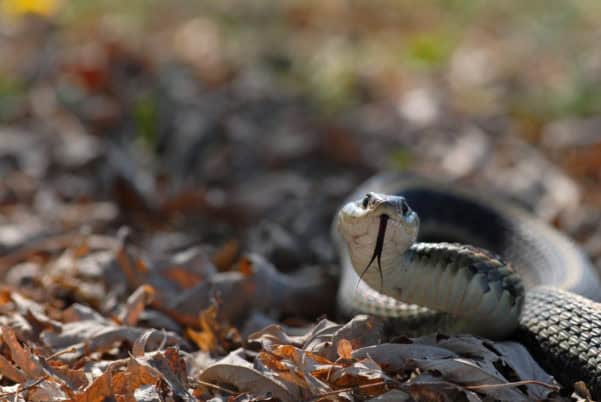
Florida’s diverse wildlife includes a range of snake species. While most are harmless and play important roles in our ecosystem, it’s always good to be aware of what you might encounter and how to keep your yard snake-free. Here’s a friendly look at common Florida snakes and simple tips for keeping snakes out of your yard.
If you notice more snakes on your property than you’re comfortable with, call a wildlife company near you. These experts will provide you with a snake removal and prevention plan for keeping snakes out of your yard in the future.
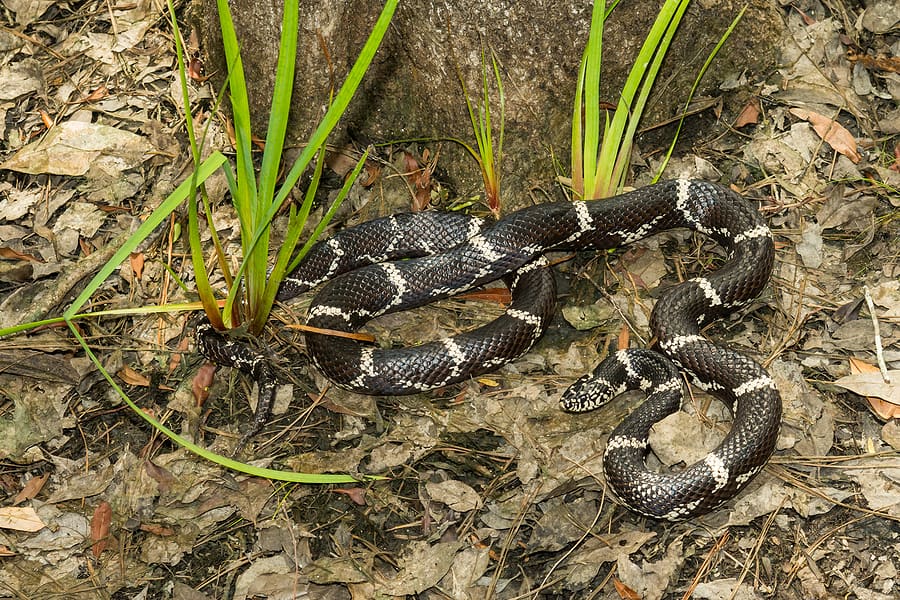
When it comes to living in the beautiful state of Georgia, there’s no denying that the warm climate and lush landscapes come with their fair share of wildlife encounters. One of the most common and, for many, dreaded encounters is with snakes. While Georgia is home to a variety of snake species, understanding snake control, prevention, and removal techniques is essential for safeguarding your property and your loved ones. In this blog post, we’ll explore common snakes in Georgia, when snake season typically occurs, and effective ways to keep these slithering neighbors at bay.
Before delving into snake control methods, let’s familiarize ourselves with some of the common snake species found in Georgia:
Snake season in Georgia typically begins in the spring and lasts through the fall. During this time, snakes become more active as they search for food and suitable breeding grounds. It’s essential to be especially vigilant during these months to reduce the likelihood of unwanted snake encounters.
Now that we’ve discussed common snakes and their active seasons, let’s explore effective snake control and prevention techniques to protect your home and family:
While preventing snake encounters is the first line of defense, it’s also crucial to know how to protect yourself from snake bites:
The importance of effective snake control and removal cannot be stressed enough. While Georgia’s natural beauty and warm climate make it an attractive place to live, it’s essential to be prepared for encounters with snakes. By following these snake control and prevention tips, you can create a safer environment for your family and minimize the chances of unwelcome snake guests. Remember that professional assistance through your local pest control company is just a phone call away if you ever need help with snake removal or control. Stay vigilant, stay safe, and enjoy all that Georgia has to offer!
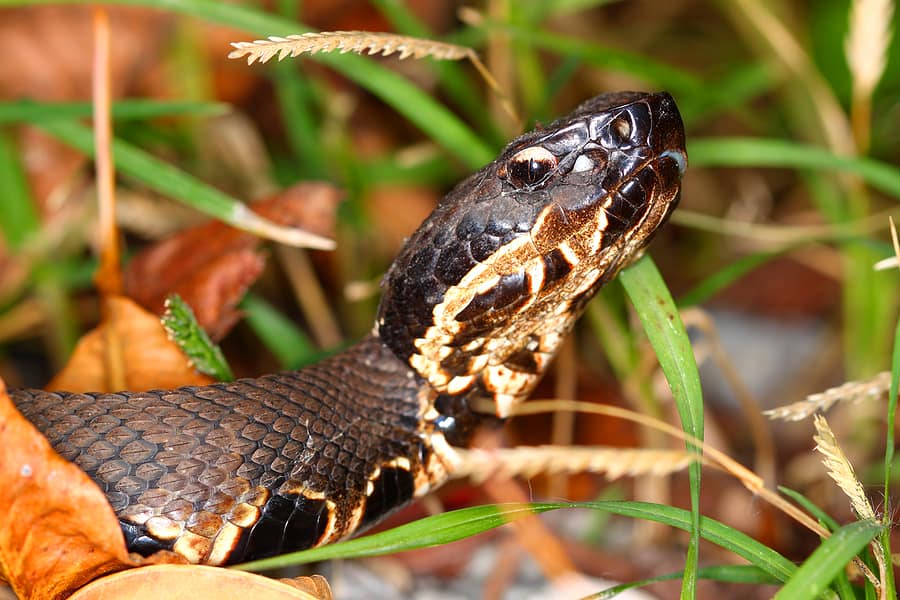
As the weather heats up, snakes will be on the move, emerging from hibernation in search of food. Snake season peaks in the summertime, making your chances of an encounter with these reptiles increase. Here are 7 common snakes you may encounter this summer, along with snake prevention tips to help you avoid these pests while outdoors.
Eastern kingsnakes are large snakes, usually 3-4 feet long, shiny black in color with white or yellow bands. They have a short, blunt snout, rectangular looking head, and small beady eyes. They’re usually found in protected areas such as woods, overgrown vegetation, cluttered areas, etc. and most active during summer months in the morning hours. If you encounter a kingsnake, use caution; they are non-venomous but strong constrictors and may bite if handled. Keep eastern kingsnakes away from your home by limiting their food sources – other snakes, lizards, rodents, and birds, removing clutter and debris, storing wood away from your home’s exterior, use a snake repellent product, or contact a pest control company specializing in snake control.
Rat snakes are large, 3-6+ feet long, and black and yellow with stripes, or gray with darker patches. You can expect to find them in wooded areas, overgrown vegetation, swamps, abandoned or vacant buildings. Though they’re non-venomous, they may bite if handled or threatened and will climb for food. Prevent rat snakes around your home by reducing potential food sources – rats, mice, squirrels, birds, and bird eggs – using a snake repellent product, or professional snake control by a pest or wildlife removal company.
Garter snakes are small, usually 1/5-4 feet long, with three yellow stripes running vertically down a dark colored body. They’re active during day or night hours and often found in suburban areas under debris or boards – anywhere that provides cover for them – and around water, grassy areas, woods, and marshes. Garter snakes are common throughout the Southeast and most of the U.S. Like other non-venomous snakes, they pose no real threat unless bothered. Keep garter snakes away from you home by limiting preferred food sources – worms, slugs, frogs, toads, salamanders, fish and tadpoles – removing items that can be used as cover (wood, debris, etc.), and using a snake repellent product.
Black racers are large snakes, 5 feet long or larger, with slender black bodies and sometimes a white chin. Juvenile black racers are grayish in color with darker blotches. Black racers are common through the eastern U.S. and most often seen near forest edges, fields, or wetland outskirts during the day in warmer months. They’re non-venomous and usually timid, fleeing when threatened. To keep them away from your home, reduce food sources – insects, lizards, snakes, birds, rodents, and amphibians – and apply snake repellent products.
Brown snakes are small, 6-13 inches long, and usually brown but may be yellowish, reddish, or grayish-brown with darker spots on the back. You’ll find them in residential areas, wooded areas, near wetlands, and in urban areas under wood, leaves, and debris, or any other area with adequate ground cover. Brown snakes are the most common snake found in urban areas. They’re most active during evening or night hours, occasionally seen crossing roads. Brown snakes are non-venomous and pose no serious threat although may bite if threatened. While they’re not dangerous, you may not want to find one hiding out around your home. Prevent this by removing clutter and debris from your yard and consider using a product that brown snakes find repellent.
Copperheads are large snakes, usually 2-4 feet long, with a heavy body and a triangular shaped head. They are tan to brown in color with hourglass shaped darker bands running across the body; juvenile copperheads have a distinct yellow tail tip. You may encounter a copperhead snake in suburban areas or in semi-protected areas like woods or swamps. They’re common throughout central and eastern U.S. with the exception of some areas in south Georgia and all of Florida. Copperheads are venomous and dangerous and may bite if threatened. Use caution when outside in the summer, especially at night. Deter copperhead snakes from hanging out around your house by reducing potential food sources – mice, small birds, lizards, small snakes, amphibians and insects. If you see a copperhead, contact a wildlife control company to safely remove it.
Cottonmouths, also called water moccasins, are large snakes – 2-4 feet in length – with a very heavy body and a distinctly triangular head. Their color varies from solid brown or brown or yellow with dark crossbands with a white mouse (inside); juveniles have a yellow tail tip. When threatened, cottonmouths display with the head in the middle of their coiled body and mouth wide open. As the name “water moccasin” suggests, cottonmouth snakes prefer to inhabit freshwater, swamps, river floodplains, and heavily vegetated wetlands. While they’re most common throughout coastal regions, cottonmouths are prevalent across the southeast U.S. They are active day and night but more likely to be seen when foraging for food at night in warmer months. Avoid cottonmouths if you come in contact with one, they are venomous and may bite if threatened. Use caution around fresh water habitats in the summer.
Your Guide To Summer Pest Control
Watch Out for These Stinging Pests
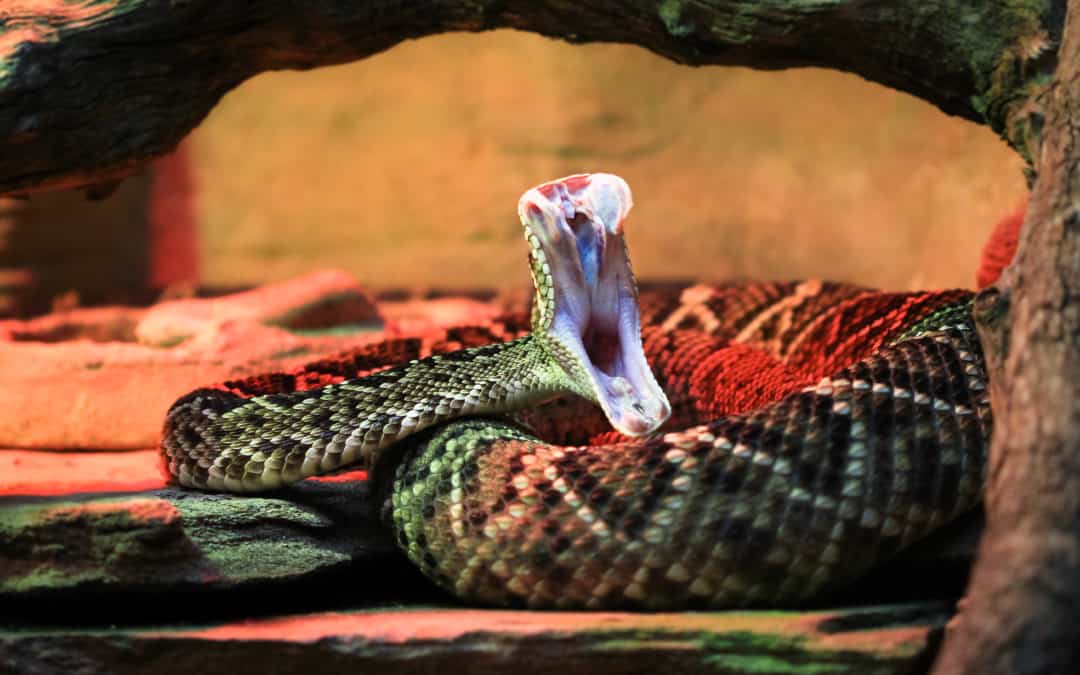
While It’s true there are plenty of snakes that play a vital role in our ecosystem that we should protect and preserve, there are also venomous species in areas that can pose a serious threat to human life. It’s important to be cautious of these species as they start coming out of hibernation for the summer. Here are a few venomous snakes that are common in our area and how to identify them.
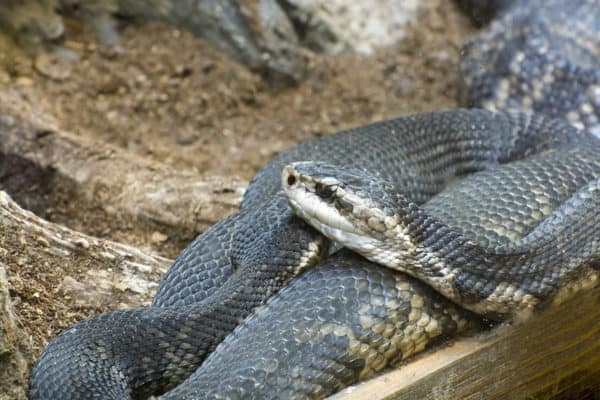
Water moccasins have a triangular head. They are considered to be heavy-bodied and vary in coloration. These snakes can be active both during the day and night but tend to feed in the dark. They are found throughout the entire southeast U.S., typically near cypress swamps, river floodplains, and heavily vegetated wetlands.
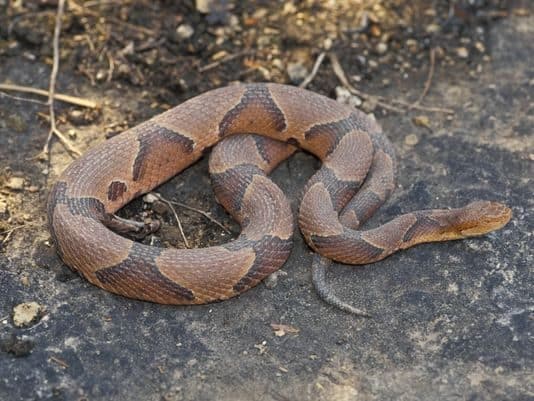
Light brown to tan in color, copperheads can be easily recognized by the hourglass-shaped crossbands along their bodies. These snakes can be found throughout the eastern and central U.S., living in a variety of habitats. Copperheads are comfortable in dry, rocky areas, forested areas, or even wetlands. It is even possible to catch copperheads in suburban neighborhoods with patches of forest.
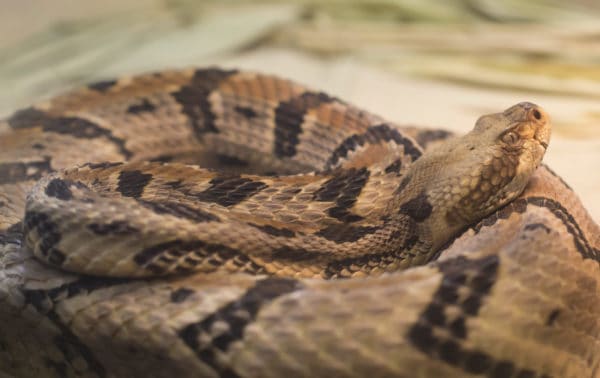
Timber rattlesnakes are considered unique as they are active both day and night. They typically like to hibernate during cold weather but become active in late spring and remain so until late fall. These snakes are big, heavy-bodied, and can grow up to 6 feet in length. They are found in the eastern U.S. where you can spot them residing in forests, mountainous areas, rural habitats in farming areas and even near swamps and river floodplains.
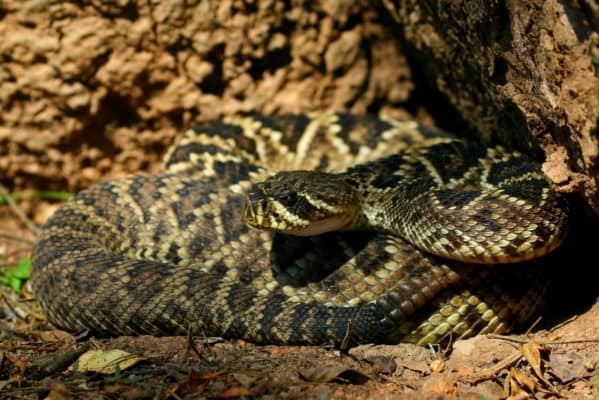
Eastern diamondbacks are dark brown in color and have a row of diamond shapes patterned on their bodies that are outlined by a yellowish border. Diamondbacks measure 3 to 5 feet but can reach up to 7 feet in length. These venomous snakes are active during the day but are most commonly seen in the mornings and evenings in the summer months. They often inhabit dry sandy areas, pinewoods, coastal dune habitats, and flatwoods. They typically avoid areas that are wet but will live along edges of swamps.
With this information in mind, it’s important to be aware and be cautious of these venomous snakes while outdoors enjoying your summer! Remember, however, to please be conscious that in certain states it is illegal to kill venomous snakes. If you realize you have a snake in or around your house, it’s best to contact a local wildlife control company who can safely remove the offending pest.

Fall will soon be upon us! As the temperatures cool down we want to get outdoors and enjoy the milder weather at the turn of the season. But BEWARE! Snakes are also active during this time of the year. Most snakebites occur between April and October when the weather is still warm and outdoor activities are popular. Fall is breeding and hatching season which makes males more aggressive as they are trying to get the attention of female snakes. Newly hatched snakes are also aggressive as they are trying to avoid predators. Snakes are also preparing for hibernation or brumation (where they don’t actually sleep but instead slow their metabolism to acclimate to the cooler temperatures) which makes them more active during this time of the year. Here are some common snakes you may encounter in southern states and what you can do to keep them away from your home.
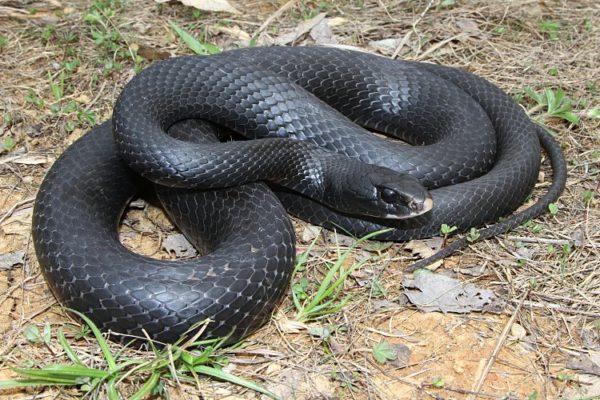
Black racers are large snakes (usually over 5 feet long). They are slender and solid black in color, although some may have a white chin. They are often mistaken for other large, black snakes. Juveniles look completely different, usually gray in color with darker blotches. They tend to flee quickly when threatened. They are found throughout the eastern US. They can be found in any habitat but are more common in old fields, near forest edges, and the edges of wetlands. They are non-venomous but may bite if handled.
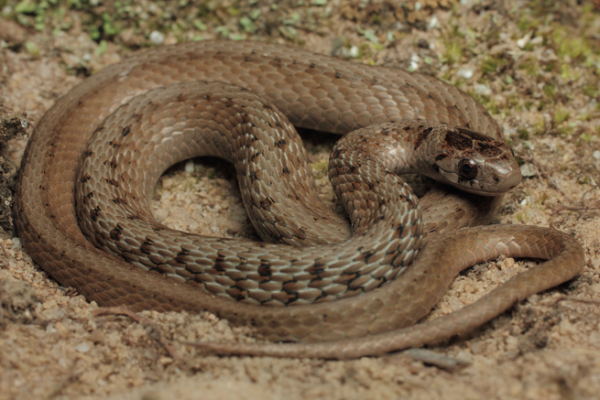
Brown snakes are small (usually only 6-13 inches in length). Most of them are brown in color but they can yellow, reddish, or grayish brown and can have darker spots on their backs. They can be found in wooded areas, near wetlands, and in urban areas. They are not found in areas of high elevation. They like to live under debris in residential areas or any other area with enough groundcover. They are non-venomous but may bite if handled.
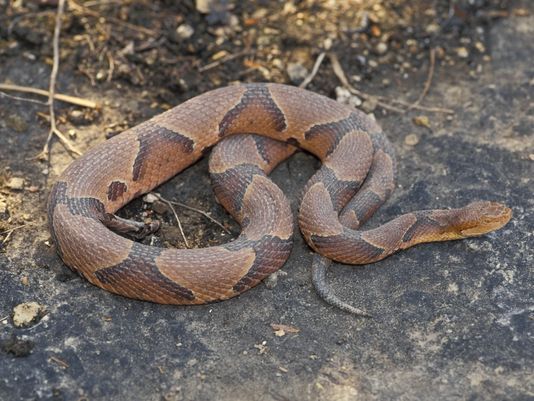
Copperheads are large snakes (usually 2-4 feet long). They have a distinctly triangular shaped head. They are tan to brown with darker hourglass shaped bands on their bodies. Juvenile copperheads have a distinct yellow-tipped tail. They are found in semi-protected areas like woods and swamps but may also be found in urban areas. They are found throughout the central and eastern US, with the exception of some parts of South Georgia and the entire state of Florida. They are venomous and may bite if they feel threatened.
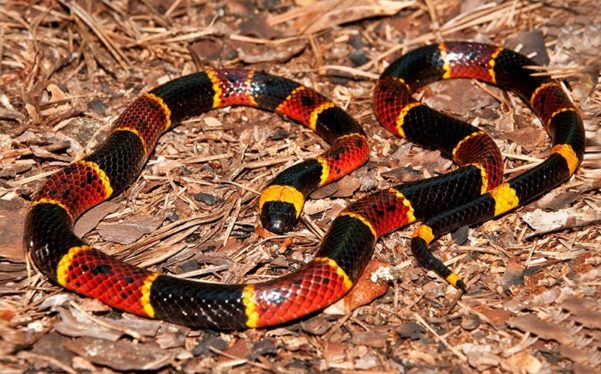
Coral snakes are medium sized (1.5 to 2.5 feet long). They are brightly colored red, yellow, and black. If they feel threatened, they will lift up their tail and curl the tip over. Although they spend the majority of their time underground, they can be found in pine and scrub sandhill habitats, hardwood forests and pine flatwoods, and in suburban areas. They are found throughout much of the southern coastal plain, although they are most common in Florida. They are venomous and may bite if they feel threatened.
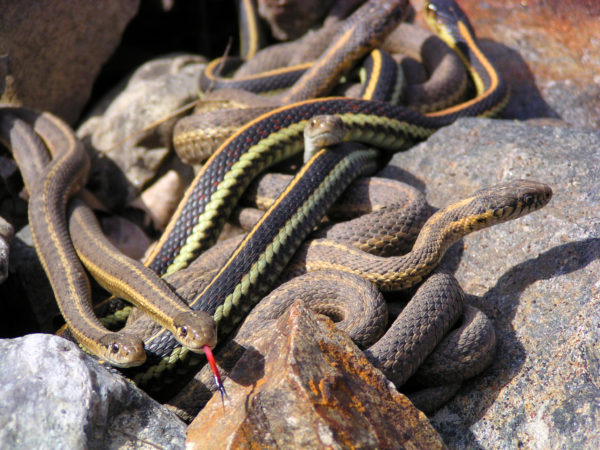
Garter snakes are small to medium sized (1.5 to 4 feet long). They have dark colored bodies with three yellow stripes running vertically. They prefer protected areas such as woods or marshes but are also common in grassy areas and around water. They are very common in suburban areas as long as there is adequate cover for them. They are common throughout the Southeast and most of the US. They are non-venomous but may bite if handled.
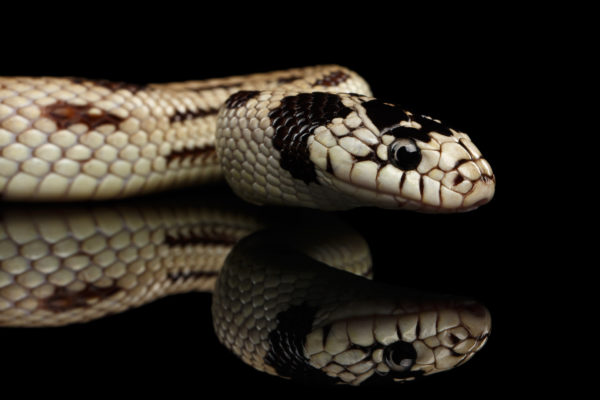
King snakes are large snakes (3-4 feet long). They are a shiny black color with white or yellow bands. They have a rectangular looking head with a short, blunt snout. They are found in protected areas such as woods, overgrown vegetation, and cluttered areas. They are found throughout the southeast US. They are non-venomous but may bite if handled or threatened.
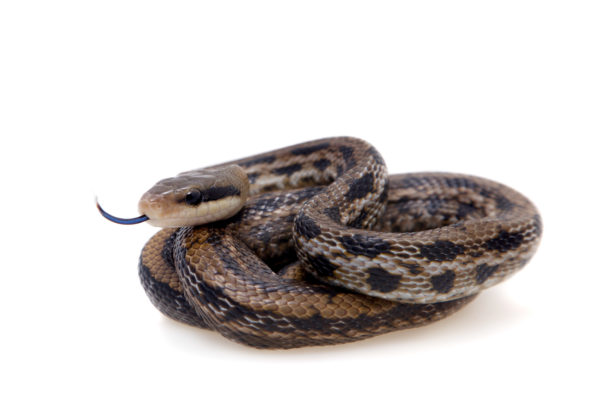
Rat snakes are large snakes (most 3-5 feet long but some longer than 6 feet). Their coloring depends on the region they live in and can be black, yellow with stripes, or gray with darker patches. They are found in semi-protected areas such as woods, overgrown vegetation, swamps, or abandoned and vacant buildings. They are found throughout the southeast US. They may climb for food. They are non-venomous but may bite if handled or threatened.
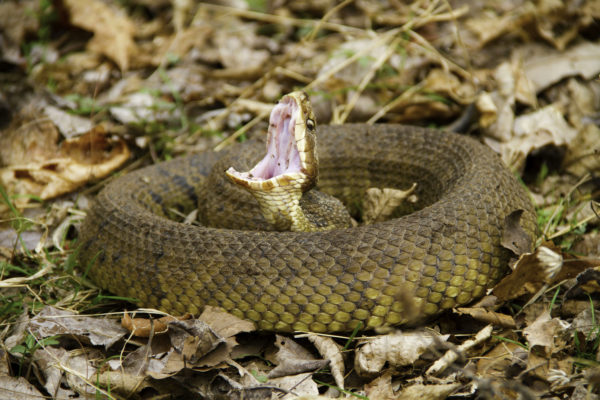
Water moccasins are also known as cottonmouths. They are large snakes (2-4 feet long). Their color varies from solid brown to yellow with dark crossbands. Juveniles have a yellow-tipped tail. Their head is distinctly triangular. When threatened they have a characteristic display with their head in the middle of their coiled body and their mouth wide open. They are found in freshwater habitats, cypress swamps, river floodplains, and heavily vegetated wetlands. They are found throughout the southeast US but are more common in coastal regions. They are venomous snakes and may bite when threatened.
While it is impossible to prevent snakes, there are things you can do to avoid them and prepare yourself and your family when you are enjoying the outdoors. Check out these 10 tips to avoid snakes: